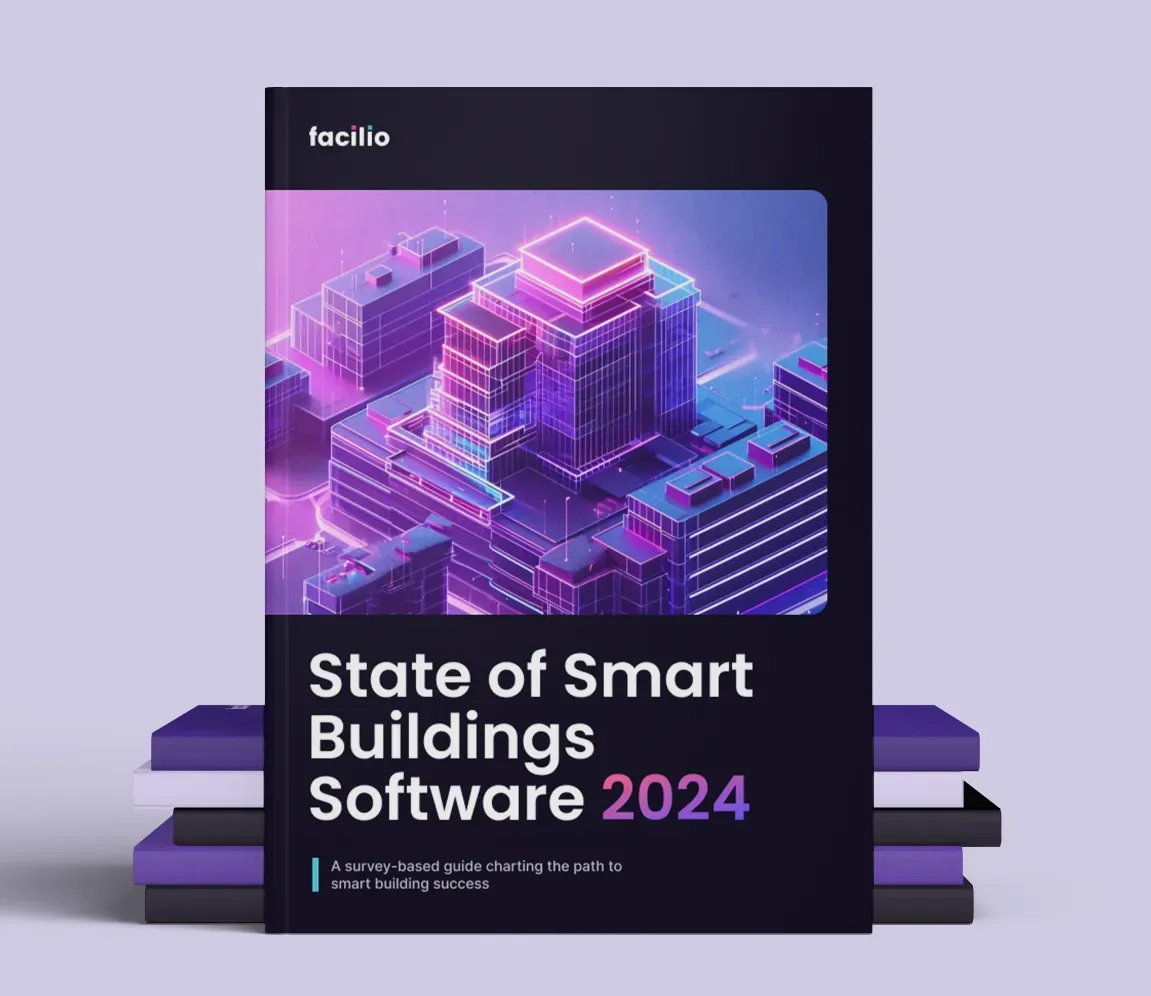How Can Energy Efficient Buildings Help You Transition from Costs to Value?
Facilities management services providers and real estate owners and operators managing large, multi-site portfolios globally now prioritize sustainability.
Decarbonizing new and existing projects is steadily becoming a crucial part of their strategy. While this may seem like a cost-intensive, complex journey, cloud-based solutions provide quick, scalable, and profitable solutions.
According to the Global Alliance for Building Constructions, built environment emissions contribute up to 40% of the total CO2 emissions.
With urgency on climate change globally, the real estate industry has hastened its pace to decarbonize with everyone aiming to meet net-zero emission targets by 2050. A McKinsey report suggests that the industry will need to triple the speed of decarbonization to get there!
Is energy efficiency only about complying with ESG (Environment and Social Governance) requirements? Not quite. Decarbonizing also brings efficiencies and optimizations to your operations and energy consumption, driving profitability.
For example, British Land, a leading property development and investment company has seen a 50% year-on-year reduction in heating/cooling energy consumption, asset optimization, and increased occupant comfort by using the right IoT-led property operations platform.
How do organizations take that first step toward decarbonization? What are the challenges, and importantly, what are the solutions available to help them surmount these challenges to eventually become energy efficient.

Understanding the imminent need
Many organizations are initially hesitant about undertaking the decarbonization journey due to the following apprehensions.
Initial cost and delayed ROI
Any technology investment requires upfront costs, and so is the case with the technology required to go energy efficient.
But the goal of energy efficiency itself is to identify and implement strategies to reduce energy consumption, improve equipment performance, and optimize energy systems.
The general perception is that decarbonization does not yield an immediate return on investment, and that operators and facilities management services providers must look at the yield in the future.
On the contrary, intelligent platforms like Facilio do help you to seamlessly take stock of all your utility consumption patterns and helps optimize existing assets, and that starts reflecting in the reduction of utility bills.
So, time to ROI is reduced from a few years to a few weeks from deployment.
With a tiered subscription approach, you've recovered the cost of the solution in a few months. Also, these systems learn from their own data to optimize and further compound your ROI, so in a matter of time, you've won the battle and the war.
Technology complexity
A 2023 Global Status Report for Buildings and Construction highlighted that one of the challenges real estate organizations face is integrating and managing advanced technology across building systems.
Specific areas include interoperability between systems, integrating smart building tech with existing infrastructure and so on.
Another report released last year, the Breakthrough Agenda Report by the International Energy Agency (IEA), also noted that despite the potential of digital tools to improve energy efficiency, there is a lag in adoption.
Is there a lag in adoption, or are there gaps in the way existing tools are used?
While facilities management providers and property owners and operators are using a range of tools and automation to derive efficiencies and agility in operations, they are unable to derive full value from these tools and tech investments.
However, several barriers hinder the implementation of these solutions:
- Disparate systems: Most of these systems are siloed, with property O&M data confined to individual buildings rather than the entire portfolio. This fragmentation makes it difficult to track energy consumption trends across multiple buildings, making data consolidation tedious and error-prone.
- Lack of visibility: Visibility is often limited because traditional BMS or CMMS software targets a single stakeholder. Different tools for vendor management, FDD, reactive maintenance, work order management, etc., create fragmented systems, making it hard to identify patterns or anomalies.
- Dependency on point solutions: Businesses need to understand that while point solutions address specific issues, their lack of consideration of the bigger picture can lead to a snowball effect. These quick fixes hinder interoperability and become barriers to future innovation.
This not only negates the advantages that tools are intended to bring to the facilities management team but is also a step backward in terms of decarbonization efforts.
There is a need for an overlay platform that brings together all the data from disparate systems, creates a seamless journey across various components of facilities management, and helps unlock insights to accelerate efficiency and decarbonization initiatives.
Unlocking levers with cloud-based technology
At the onset, cloud-based solutions provide compelling advantages to businesses in terms of cost, scalability, and flexibility.
For facilities management providers and property owners and operators, a cloud-based comprehensive digital platform can integrate seamlessly with existing operations and maintenance systems, relay data in real-time, and derive insights to bolster efficiency and save energy.
No CAPEX, no complex implementation processes that go on for years.
The features of such a platform include,
1. Single pane of glass visibility
Providing a bird-eye view across all property operations by integrating various tools - for access control, CCTV, lifts, HVAC, meters (energy, water, light and fire), space occupancy, desk occupancy, air quality sensor, CaFM, visitor management, permit, meeting room bookings, help desk, etc.

2. Open communication between systems
If systems can be connected seamlessly, data can flow between systems, resulting in ways to optimize performance and operations.
For example, data from light sensors can be used by HVAC systems to turn off lights and air conditioning in those areas. Or based on meeting room occupancy sensors, lights, projectors etc, can be switched off - so by the end of a month organizations have scored really high on utility.
3. Swift detection and resolution of faults
The challenge when there is an aberration is identifying it on time and reporting it, and then getting the repair team to action. Usually, this takes a lot of time causing downtime, and dissatisfaction.
So, the Mean Time To Repair (MTTR) becomes a parameter of importance to O&M teams.
Implementing solutions that come with capabilities to quickly isolate faults and reduce MTTR, first-time fix rates, and mean time between failures is a huge thrust to energy savings.
Tightly configured rules for every asset can help provide contextual error reports, identify the root cause of an issue or abnormality, and suggest remedial actions. This will prolong the useful life of your assets and ensure their utility consumption is optimal.
4. A 360° view into end-to-end operations
Consider this: Is there a solution that will alert the team in advance that on certain days, footfall in buildings will be higher?
This can help the operations and maintenance team plan for more personnel, increased cleaning frequency, etc. Likewise, let teams know in advance if there is predicted light footfall so resources can be scaled down proactively.
5. A unified data layer
According to IDC Research, organizations can lose up to 30% in revenue annually due to siloed data!
If a platform is able to gather data from the various assets in the building portfolio and consolidate it - this can help unlock immense insight and bring in efficiencies in energy utilization.
To quote an example, data correlation across buildings and assets helped British Land view reports on the impact of occupancy and footfall on indoor air quality (IAQ) of their properties and identified rooms that were heating/cooling at total capacity even when there were no bookings for the day.
Do more with less
The keen regulatory focus on sustainability of buildings and a deadline to becoming carbon neutral is a wake up call for property developers - without an option to hit snooze.
While integrating technology into building operations is essential for sustainability, adopting cloud-based platforms is a wise choice considering the benefits they extend. Embrace intelligent, cloud-based property management for a faster path to decarbonization and a resilient built environment.


